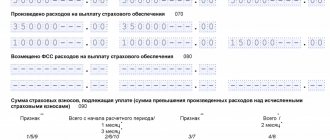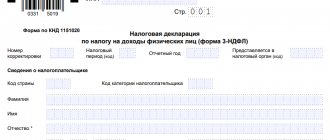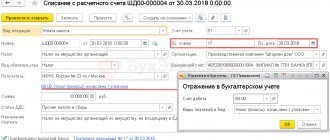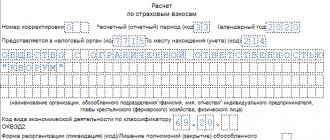Export deduction rules 2021
Currently (from July 1, 2016), the deduction of VAT on exports depends not only on the presence of documents confirming this activity, but also on what type of goods were shipped abroad:
- For non-commodity goods purchased after 01.07.2016, there is the right to deduct tax during the shipment period (paragraph 3, paragraph 3, article 172 of the Tax Code of the Russian Federation), i.e., to receive it, it is not necessary to wait for the collection of the full set of documents provided for in art. 165 Tax Code of the Russian Federation. Such deductions will not be shown in section 4. They should be reflected in section 3 (letter of the Federal Tax Service of Russia dated October 31, 2017 No. SD-4-3/ [email protected] ).
- For raw materials shipped for export, the deduction procedure has not changed; you can still claim it only after receiving the last document confirming the fact of export from the Russian Federation. The list of raw materials is determined by Decree of the Government of the Russian Federation dated April 18, 2018 No. 466.
In the VAT return for taxes related to the export of raw materials that require confirmation, 3 special sections must be completed:
- 4 - for transactions with a confirmed right to apply a 0% rate;
- 5 - for transactions for which documents were collected earlier, but the right to deduction arose only now;
- 6 - for transactions that were found to have an incomplete package of supporting documents at the time of expiration of the period allotted for their collection.
The declaration form for the reporting periods for 2021 and the reporting periods of 2021 contains the order dated October 29, 2014 No. ММВ-7-3 / [email protected] as amended. Order of the Federal Tax Service dated August 19, 2020 No. ED-7-3/ [email protected]
ConsultantPlus experts explained in detail how to correctly fill out a VAT return when exporting. If you do not have access to the K+ system, get a trial online access for free.
A description of possible errors in the declaration can be found here .
Filling out line 030 if the tax base is taken into account along with the tax
Let's look at what goes into line 030:
1. Receipts of funds, according to tax legislation:
- Financial aid
- Discounts on sales of goods, bills
- Interest on a loan for goods, if they exceed the Central Bank discount rate
Important! It is worth remembering that this line does not take into account sales at a 0% rate and export operations
- Payment for the goods in full or prepayment towards future deliveries
When funds are received for the goods as an advance payment, that is, an advance payment, the seller must issue an invoice for the advance payment within 5 days and register it in the sales book, then the VAT tax base must be reflected in the sales book.
These receipts must be reflected in line 070 of the declaration and do not fall into 030.
- Sale of property acquired externally
When a product is sold that is subject to VAT accounting, the tax base is calculated as the difference between the selling price of the purchased product (including VAT) and the cost of its purchase. We enter this difference in column 3 of line 030 of the VAT return. And column 5 of the same line contains the estimated VAT amount.
When to fill out section 4 and when to fill out section 6 of the VAT declaration
Section 4 is completed if, within 180 days from the date of shipment, they managed to collect a complete package of documents confirming the export. Information about the amount of the tax deduction and the volume of the base with a 0% rate to which it relates is included in the declaration for the period in which the documents are collected, regardless of whether or not this day coincides with the end of the tax period (letters from the Ministry of Finance dated 02/15/2013 No. 03-07-08/4169, dated 02/16/2012 No. 03-07-08/41).
If the deadline for confirming the export has expired and all the necessary supporting documents have not been collected, the taxpayer must fill out section 6 of the VAT return, charging tax payable at the usual rate on the volume of shipment.
NOTE! In this case, the tax is calculated for the period in which the export shipment occurred. Accordingly, section 6 is filled in in the updated declaration for the shipment period.
When collecting late supporting documents in the next reporting period, the taxpayer has the opportunity to reflect these transactions, previously included in section 6, already in section 4 of the current tax return. At the same time, the right to a refund of additional VAT accrued and paid to the budget appears. Its amount is reflected in line 040 of section 4.
Composition of the value added tax return
Important! The VAT tax return consists of 12 sections and is submitted by all legal entities that have an obligation to pay VAT and operate on a common system; simplified tax return companies do not report on VAT.
Line 030 of the declaration is in the third section. Let's look at the composition of the three sections and focus more specifically on the third.
| Section number | Content |
| Title page | Here you indicate the full name of the organization, its INN, KPP, which are then reflected on each sheet automatically, as well as the tax period for which the report is submitted and the adjustment number |
| Section 1 | Data from Section 3 is reflected in Section 1 and indicates what amounts are payable for tax; OKTMO is filled in here according to the generally accepted classifier |
| Section 2 | Calculated VAT amounts for organizations/individual entrepreneurs having the status of tax agents; |
| Section 3 | The total amount of goods sold subject to taxation |
The shorter report form from the title page and section 1 is due when:
- There were no VAT transactions during the past quarter
- Conducting sales outside the Russian Federation
- In cases where long-term operations require more than six months
- Legal entities on the simplified tax system, UTII, PSN
Line 030 of the third section tells us how much goods were sold and how much VAT will be charged on it.
Note that in column 3, where the tax base is indicated on line 030, the amount including tax is given. In the case of direct sales, the tax base does not include VAT and the tax is calculated from it at a rate of 18%.
Let's give an example
The tax base for goods sold was 200,000 rubles excluding VAT
VAT in this situation is equal to: 200,000 × 18% = 36,000 rubles.
Cost including tax = RUB 236,000.
When the calculated rate is applied, VAT is already included in the tax base, so we calculate the tax the other way around (18/118).
Example of using a settlement rate:
The tax base will be 236,000 rubles. (indicated in column 3 of line 030 of the VAT return).
And the VAT amount is calculated: 236,000 × 18/118 = 36,000 rubles. (indicated in column 5 of line 030 of section 3 of the VAT return)
When to fill out section 5 of the VAT return
If the taxpayer has previously documented the validity of using a zero value added tax rate, but the right to apply VAT deductions for these transactions arose only in the current period, Section 5 of the VAT return is completed.
At the same time, it is no longer necessary to document the right to apply a 0% rate (clause 1 of Article 164 of the Tax Code of the Russian Federation).
ConsultantPlus experts provided a line-by-line algorithm for filling out the VAT return for 2021. To do everything correctly, get trial access to the system and go to the Ready solution. It's free.
Value added tax, what we should know
The concept of VAT should be understood as the difference between the purchase and sale prices, if described in simple words.
Depending on the type of activity, different tax rates are divided, as a rule, on the territory of the Russian Federation a rate of 18% is applied, but there are cases when an enterprise uses a mixed tax. Next, let’s look at what the rates for value added tax are:
| Bet size | What goods and services does it apply to? |
| 18% | Almost all sales of goods in the Russian Federation operate at this rate. |
| 10% | Medical supplies, limited grocery items, and for children |
| 0% | Goods that are exported, some passenger transportation and others |
Important! VAT is included in the purchase price and on each receipt we can see its amount, thus understanding that the buyer is a payer of this tax. And the company itself is an intermediary.
Rules for filling out sections 4–6 of the declaration
How to fill out section 4 of the VAT return? In section 4 of the declaration, the codes of transactions carried out using a 0% rate must be indicated line by line, and for each code - the tax base, the amount of deductions corresponding to it, as well as the amount of tax accepted for deduction with a delay, and the amount of tax previously accepted for deduction, subject to restoration. Moreover, the set of these 5 lines is repeated exactly as many times as required, depending on the number of types of operations.
This section also contains blocks of information:
- for the return of goods (lines 060–080) with information about the transaction code, the size of the tax base and the amount of tax for recovery;
- adjustment of the tax amount due to a change in the sales price (lines 090–110), in which the transaction code and data on the adjustment of the tax base when the price increases/decrease is entered.
Lines 120 and 130 reflect the amount of VAT to be reimbursed/paid based on the results of section 4.
Section 5 states:
- confirmed tax bases and related deductions with a breakdown of this data by transaction codes - in lines 030–050;
- undocumented bases and deductions on them - in lines 060, 070;
- the totals generated according to the section data are in lines 070, 080.
In section 6, regarding the calculation of VAT on transactions with an unconfirmed zero rate, the information is divided into groups of lines 010–040 with information about the transaction code, the size of the tax base, the amount of VAT charged and applicable deductions. The total lines 050, 060 indicate the amounts of calculated tax and deductions. Lines 070–100 display information on goods return transactions, and lines 110–150 display information about tax base adjustments due to changes in product prices. The final lines for the section - 160 and 170 - determine the amount of VAT payable or refundable, respectively.
For a sample of filling out a VAT return for the 4th quarter of 2021, see ConsultantPlus, having received a trial demo access to the K+ system. It's free.
To learn how to organize VAT accounting when exporting, read the article “How is separate VAT accounting carried out when exporting?” .
How to fill out a VAT return at rate 0 ↑
This document must be drawn up according to the rules established by the competent authority. Let's look at the process of filling out the basic sections of the VAT return.
Title page
You need to start preparing this document from the title page. The entity completing the declaration will be required to indicate its registration data, such as TIN and checkpoint.
This information is contained in the certificate of registration issued to him.
The following is the “Adjustment Number”:
| Number | Condition |
| 0 | If the document is transmitted for the first time |
| 1 | If an updated act is submitted |
In the “Reporting year” column, the subject writes the year in which the declaration is drawn up. Then you will need to mark the tax authority (code) where the completed document will be sent.
Additionally, you need to add code 400 to the corresponding line - this will confirm that the declaration is sent to the competent authority at the place of official registration, for example, in Moscow.
Next, fill in the column “codes of types of economic activity” in accordance with OKVED. The applicant is also required to add a contact phone number, the number of pages on which the declaration and attachments are drawn up.
In the line “I confirm the accuracy and completeness of the information specified in this declaration,” the number 1 is written if it is signed by the head of the company or 2 if the subject is acting under a power of attorney.
How to properly keep VAT records, see the article: VAT entries. Find out what VAT recovery is here.
These persons must certify the document with their signature in a certain column, while adding their full name.
If a person carries out his activities under a power of attorney, then in a special field he notes the type of document that indicates his powers. A copy of the power of attorney is always attached to the declaration.
Section 1
The first section should record the monetary value of the tax that the company is obliged to pay to the budget according to the taxpayer.
When registering, you must fill out the fields with the Taxpayer Identification Number (TIN), KPP, and also do not forget to indicate the page number.
The rest are set this way:
| Line | Description |
| 010 | OKTMO code, based on the Order of Rosstandart dated June 14, 2013. No. 159-st “On the adoption and implementation of the All-Russian Classifier of Municipal Territories OK 033-2013” |
| 020 | Budget classification code |
| 030, 040 | The amount of this payment |
| 050 | Monetary value of VAT returned to the applicant from the budget |
Section 2
The second section includes data regarding the amount of tax that needs to be included in the budget according to the information declared by the tax agent.
When drawing up, you must enter the tax agent’s tax identification number and checkpoint, as well as provide the page number.
| Line number | Content |
| 010 | Checkpoint of the branch of the foreign company for which the document is being transferred |
| 020 | Name of the foreign entity |
| 030 | INN of the subject, if there is none, then a dash is put |
| 040 | Budget classification code |
| 050 | OKATO code |
| 060 | Total for accrued payment |
| 070 | Operation code |
| 080 | The value that was calculated by the tax agent for objects shipped during the reporting period |
| 090 | The amount of tax that was established from payment or its partial contribution towards future shipments of objects |
You should remember the condition that if there is no information in column 080, then the amount from column 090 moves to 060 and vice versa.
Section 3
Section 3 shows a notice of tax rates and tax base, plus the amount of calculated VAT and tax deductions.
When completing the section, lines must be filled in indicating the taxpayer’s registration data - TIN, KPP.
The tax base is recorded in columns 3.5; it can be determined using clause 1 of Art. 159 of the Tax Code of the Russian Federation and Art. 152, 153, 154, 155, 156 and 157 of this regulatory act, plus the amount of tax.
Lines 010-040 do not include information about actions that are not subject to taxation, as well as payments for future supplies.
In lines 010 and 020, you must record the amounts for which rates of 18% and 10% apply. These numbers can be calculated by multiplying the information from column 3 of section 3 by 18/10 and dividing the resulting number by 100.
To enter information on pages 030 and 040, it is necessary to make certain calculations: multiply the information from column 3 of the 3rd section by 18 and divide by 118, or multiply by 10 and divide by 110.
| Line | Description |
| 050 | To be filled in if the company is sold as a whole, as a property complex |
| 060 | If construction and installation work was carried out for your own needs |
| 070 | The amount of payment for future actions, as well as the amount of advance or other contributions |
| 080 | Amounts that were associated with transactions to repay the cost of goods, work, services that increase the tax base |
| 090 | The amount of VAT that can be restored |
| 100 | The amount that was previously accepted for deduction and will be restored when carrying out individual transactions using a zero rate |
| 110 | The amount of VAT that was billed to the taxpayer-client |
| 120 | Total VAT amount |
| 130-210 | VAT to be taken as a deduction |
| 210 | Filled out by the taxpayer-buyer, fulfilling the powers of a tax agent, indicating the amount to be deducted |
| 220 | The total amount of tax, which is calculated by adding the amounts indicated in pages 130 and 150-170, as well as 200 and 210 |
| 230 | The resulting amount calculated for inclusion in the budget |
| 240 | The resulting amount calculated for reduction during the reporting period |
How to correctly recover VAT from the budget? Find out about this in the article: VAT refund. When filing an adjustment VAT return, read here.
How to pay VAT correctly and on time, see here.
Section 4
Section 4 contains information about transactions that either exclude the need to pay VAT or are taxed at 0 interest rate.
Filling procedure:
| Column number | Content |
| Box 1 | Operation codes |
| Column 2 | Tax bases must be prepared according to separate codes |
| Column 3 | Tax deductions for transactions |
| Column 4 | VAT amount by separate code |
| Box 5 | The amount of tax previously accepted for deduction on transactions that did not have documentary evidence of the use of the 0 rate |
Line 010 – the total amount of tax that will be deducted.
The value of this line is calculated using the formula:
Results
To reflect data on transactions taxed at a 0% VAT rate and requiring documentary confirmation of the fact of export, sections 4–6 are intended in the declaration. The main volume of data (it relates to confirmed exports) falls into section 4. Section 6 provides information on transactions for which documents have not been collected justifying the right to apply a preferential rate, and section 5 contains information on transactions that have received documentary confirmation in earlier periods, and the right to apply deductions is only in the current period.
Sources:
- Tax Code of the Russian Federation
- Order of the Federal Tax Service of Russia dated October 29, 2014 No. ММВ-7-3/ [email protected]
You can find more complete information on the topic in ConsultantPlus. Free trial access to the system for 2 days.







